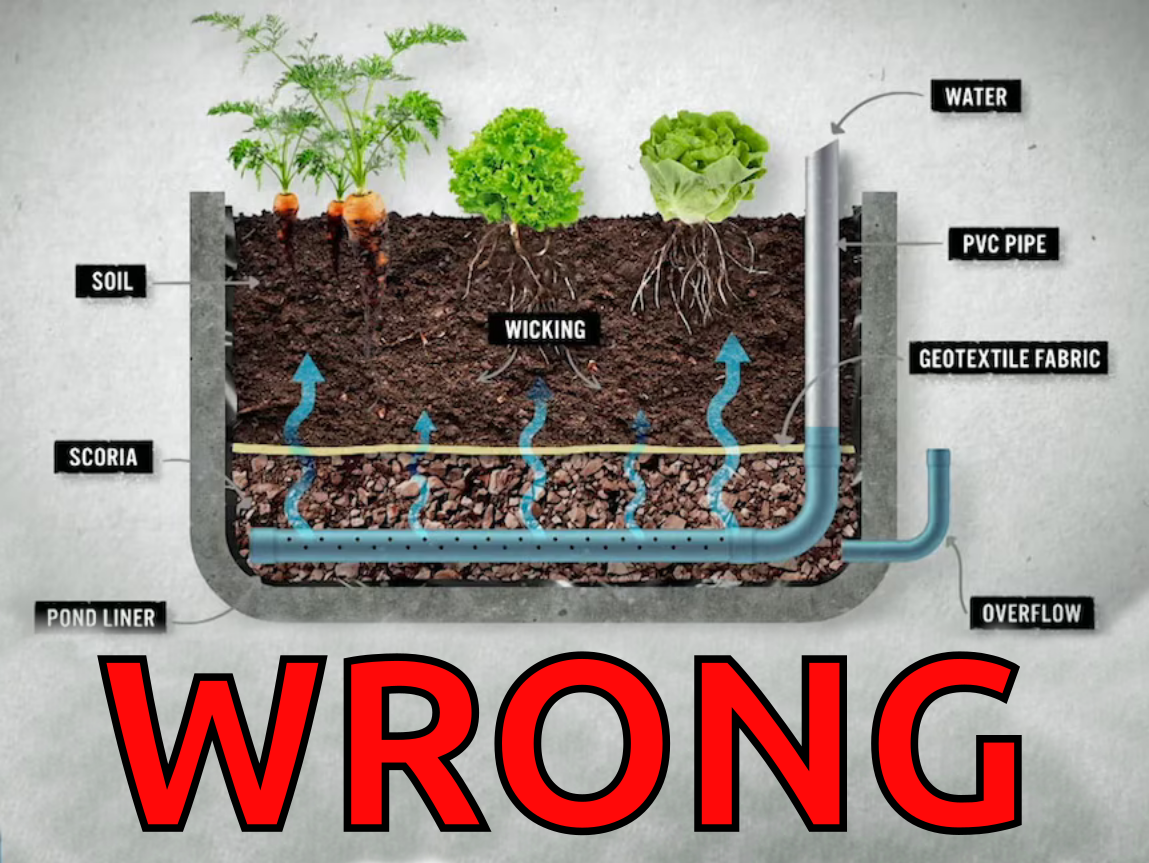Many so-called “wicking beds” found on the internet fail to wick properly. Unfortunately, even reputable sources like the ABC have promoted flawed designs. These issues stem from two major misconceptions.
Misconception 1: Soil Filling the Reservoir
Some believe that rain or excess surface watering will cause soil to fill the water reservoir. This only happens if the outlet holes of the reservoir pipe face upwards. When properly positioned downward, water moves through soil too slowly to carry soil particles into the reservoir.
Through years of testing and examining dozens of wicking boxes—some exposed to heavy rain and the floods in 2011 and 2013—only a few contained small amounts of soil in the reservoir pipe, and even then, just a handful.
While some designs use cloth to separate the soil from the reservoir, this disrupts the wicking process. Plant roots can still grow between the bed walls and the lining to access water, which lowers the water table and creates an air gap. Since air does not wick, the wicking action stops entirely.
Misconception 2: Water-Logging
There is a common but unfounded fear that wicking beds will become waterlogged. However, water in the bottom layer (below the overflow level) does not remain stagnant for long. Transpiration from plants and evaporation from the surface quickly draw water up, allowing air with oxygen to return to the lower layers. Even in the absence of plants, natural evaporation is sufficient to prevent water logging.
Many designs incorporate stones in the bottom layer, but in addition to creating an airlock this is ineffective for two more reasons:
- Stones do not store water, and the open spaces between them lack capillaries, meaning they do not wick.
- This wasted space should instead be filled with soil, which holds more water and supports beneficial soil biology. While this may sound counter-intuitive, we have tested this, and you can check the results in our article on the real costs of using cloth and stones in wicking boxes and beds.
We hope by understanding these design flaws and avoiding common misconceptions, you can create a truly effective wicking bed that functions as intended. If you want to learn about how to improve your soil (particularly in cases of sandy soil), read our guide to making your own healthy soil.


